‘The Power of the Dark Crystal’ comic takes us beyond Jim Henson’s muppet fantasy
- Share via
What happened after the heroes vanquished darkness and restored balance to their world? Fans of “The Dark Crystal” are about to find out.
Thirty-five years after
“The sequel begins a century later,” said Spurrier. “It’s been a hundred years of peace and prosperity, in which new cultures have grown up. But all isn’t quite what it seems. There are hints of the old darkness lurking just under the surface.”
“The Dark Crystal” saw the Gelfling survivors Jen and Kira shoulder the responsibility of their entire race and planet to heal the magical Crystal that anchors their world. After fulfilling this prophecy, the two are left with the new responsibility of shaping the future of their newly restored planet.
See the most-read stories in Entertainment this hour »
“‘The Dark Crystal’ specifically sticks out because it was just so different from other kids’ movies we watched at the time,” said Kelly Matthews. “Much darker, and more adult.”
“Our story kicks off with the arrival of a stranger from a distant land,” Spurrier said. “She claims her people are dying, and she truly believes that the only way she can save them is to shatter the crystal. As you’d imagine, nobody’s going to just stand by and let her do that.”
This new character is named Thurma, and she’s a girl made of fire.
“The Power of the Dark Crystal” is based on the unproduced screenplay by David Odell, Annette Odell and Craig Pearce and is being published by Boom Studios’ Archaia imprint.
Spurrier and the Matthewses discussed the characters and story of “The Power of the Dark Crystal” over email. Check out a preview of the first issue below.

What do you remember about the first time you saw "The Dark Crystal"?
Simon Spurrier: The original movie’s only a year younger than me, so I must’ve seen it years later on VHS. I’m guessing I was maybe 7 or 8 — probably a smidge too early — and, actually, that’s an interesting point.
It’s the sort of movie nobody quite knows what to expect. Is it a fantasy? A Muppet-y comedy? I think a lot of parents just assumed, “Hey, it’s all puppets, this has gotta be kid-friendly.” Only to watch their youngsters reduced to gibbering snotty wrecks living in terror of lizard-vulture-monsters and gigantic scarab beetles.
I still loved that movie from the get-go. I tend to think kids’ stories should be a bit scary. Anyone raised on a diet of Roald Dahl knows the value of that. It’s one of the ways we learn who and what to root for. It can also teach us that not everything scary is bad.
Talking specifics, there are too many moments to do the movie justice, but, off the top of my head, the Skeksis will always be horribly memorable. The scene where the Chamberlain is attacked and defrocked by his sneering brothers is brilliantly horrifying, given how little violence is actually shown.
Oh, and Fizzgig’s snarling introduction, of course.
What was your favorite thing about the original movie?
Spurrier: For my money, even when you peel away all the extraordinary surface brilliance—the exotic creativity, the adventure, the sheer technical excellence of the puppetry—the unifying denominator which makes “The Dark Crystal” such a masterpiece can be boiled down to two words: childlike wonder.
Every character in the film is a version of a child, a youthful personality we all recognize. That’s obviously true of the main characters, both of whom are visibly and mentally ciphers for innocent, wide-eyed youth, but also for everyone else—from the laidback Mystics (remember that high-functioning kid in every classroom who just stares dreamily out the window all day?) to the venal and squabbling bullies of Skeksis.
They’re all cast as utterly original creations, but they’re very recognizable tropes once you know what you’re looking for.
They’ve led sheltered lives in hidden corners—going out amidst it all is a journey of discovery just as much as it’s a journey between two points.
So, our sense of wonder is totally filtered through our protagonists, which makes it 100% earned and palpable. That’s true even when the Wonder takes the form of some genuinely scary or horrible stuff.
The movie succeeds because it forces the viewer to encounter its world with the same astonishment, fear, curiosity and wonder that none of us have really experienced since we were kids. It’s an implicit return to youth. That’s very, very clever—and something I’ve strived to incorporate into the sequel.

Design wise, do you have a favorite race of creatures from "The Dark Crystal"? Are any more fun to draw than the others?
Kelly Matthews: It’s so hard to pick just one, but we’d have to say the Skeksis are our favorite, with the Mystics coming a close second. They both have really unique designs that are easy to translate into our style.
Nicole Matthews: The Gelfings are great as well but it was tricky at first to get them to look right; there was a fine line between too elvish and too human that took some practice to get right during the design stage.
Did you work off of the look from the film, or did look at Brian Froud's original designs?
N. Matthews: We were given the privilege of looking at the actual design packet Henson had created years ago for the movie, which gave us a peek at what they had envisioned. Thurma and Kensho were initially based on the Froud designs but those both changed as we got closer to starting the first issue and their personalities evolved from [Simon]’s revision of the original screenplay.
How much have Jen and Kira changed since the end of "The Dark Crystal"?
Spurrier: I hesitate to give too much away, but—no-brainer—they’re a hundred years older. The Crystal has sustained them in a haze of peace.
Obviously, we’re going to be re-encountering them as the heroic figures they are, but they’re no longer children, no longer naïve, and so they’ve graduated upwards from being POV characters into important cultural elements of the world itself.
That’s not to say they aren’t still saturated in wonder. As we’ll see, they spend most their time adrift in a magical dreamfast. To an extent, they’ve become one with that Wonder.
One of the nice twists in the tale is that the goals of our new protagonist Thurma—while being entirely honorable and good from her point of view—puts her in direct opposition to the worldview which Jen and Kira represent.
I’m not suggesting for a moment they play the role of villains—we’ve got plenty of those in play, including, oh yes, our old friends the Skeksis—but it’s a lovely bit of narrative skulduggery to employ the heroes of one story as the partial antagonists of another.
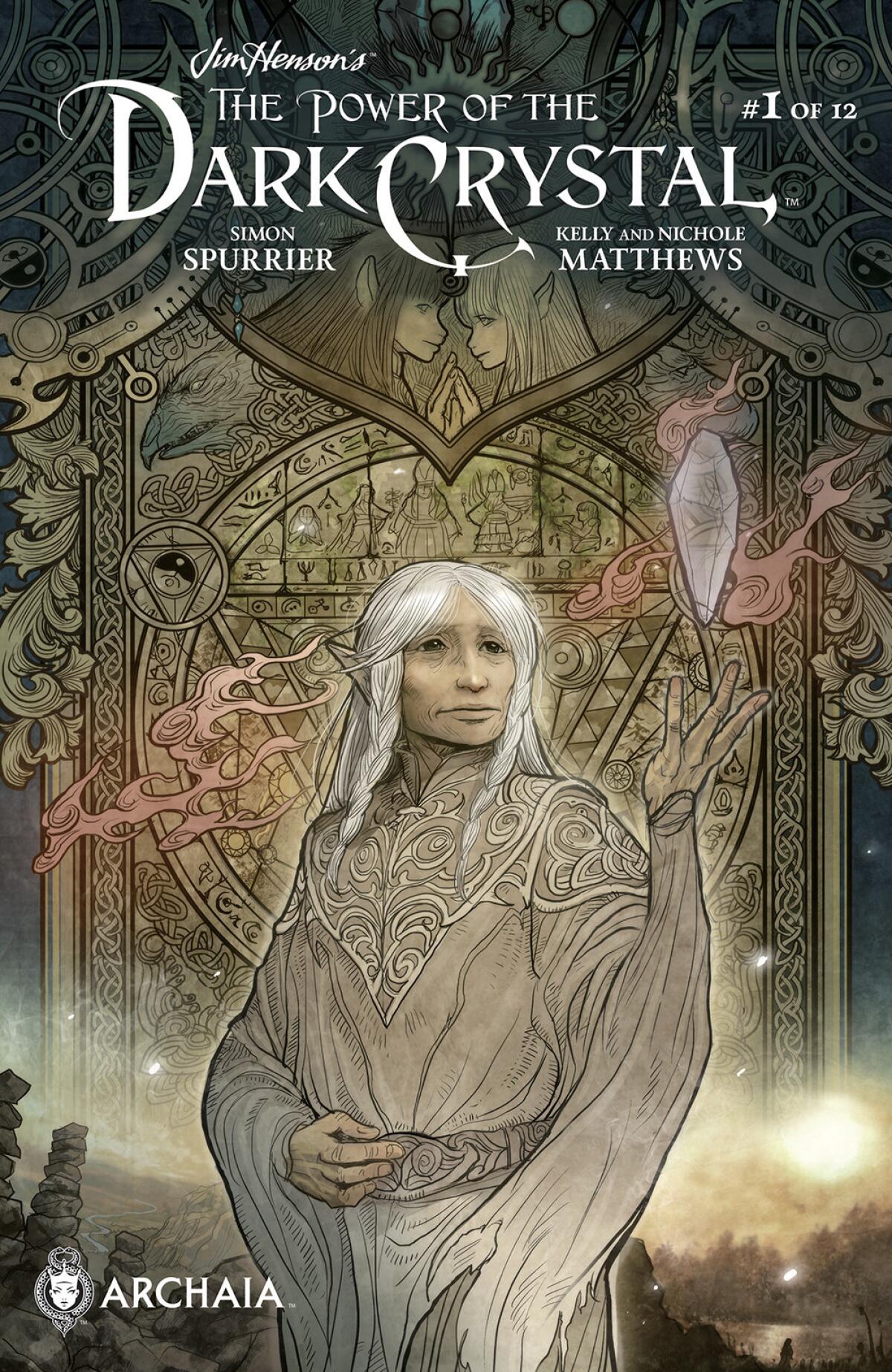
What can you tell us about Thurma and the Firelings?
Spurrier: Thurma comes from another world made of benign, beautiful fire. A radiant utopia of plasmas, superheated gases, and luminous architecture.
Her people, the Firelings, are totally at home in this environment (which would of course be unbearable to any of us), and they’ve built a rich and peaceful culture around the realities, rhythms, and strange wildlife of this scorching place.
But now disaster looms. The perpetual fires which maintain her world are suddenly cooling. The plasmas are thickening, the flames are dying down. And so, the Firelings are dying.
All they have is a scrap of ancient wisdom, barely understood, which they believe will save them. But to fulfill its instructions they must send one of their own into the “normal” world—a place which, to them, is impossibly cold and deadly. For this they choose Thurma.
N. Matthews: Thurma is a delightful little fireball who feels everything very strongly and fire itself can be very tricky, so there was a balance we needed to find that would be both reasonable to draw but also emote how we wanted.
Since Thurma’s fire reflects her emotional state, it was necessary to design it in a way that gave it personality.
It’s a lot more “fluffy” than what we would usually do. We spent a lot of time looking at scenes of Calcifer from “Howl’s Moving Castle” to get an idea of how fire could be emotive and took cues from that into what ended up in the final design.
What were you most looking forward to exploring?
Spurrier: The sequel’s set a long time after the first story, so there’s a lot of excitement to be had from the sense of re-establishing the world. What’s changed? What’s grown, what’s faltered?
The planet as seen in the movie is in a sorry state—decaying, darkened, blighted—whereas now we get to reintroduce in full bloom. Which means, full weirdness! As I say, I’ve adhered to the story in the screenplay relatively closely, but it’s been a delight to add layers of new detail. Amazing new creatures, wonderful new cultures. I could cheerfully do that stuff all day every day.
There are some stunning visuals emerging every day. The opening chapters necessarily revolve around the cultures and societies which have built up around the restored crystal, and the Matthews sisters are killing it on the art for that. But I’m particularly excited about their take on the teeming wilderness we’ll be heading out into around issue three.
K. Matthews: There are going to be a lot of new places that you’ve never seen before, and filled with all the wild flora and fauna that Henson’s known for.
Will we see Fizzgig?
Spurrier: Yes, of course!
Oh heavens yes. I believe every story should feature at least one snarling monster who is 90% mouth.
This interview has been edited for clarity.
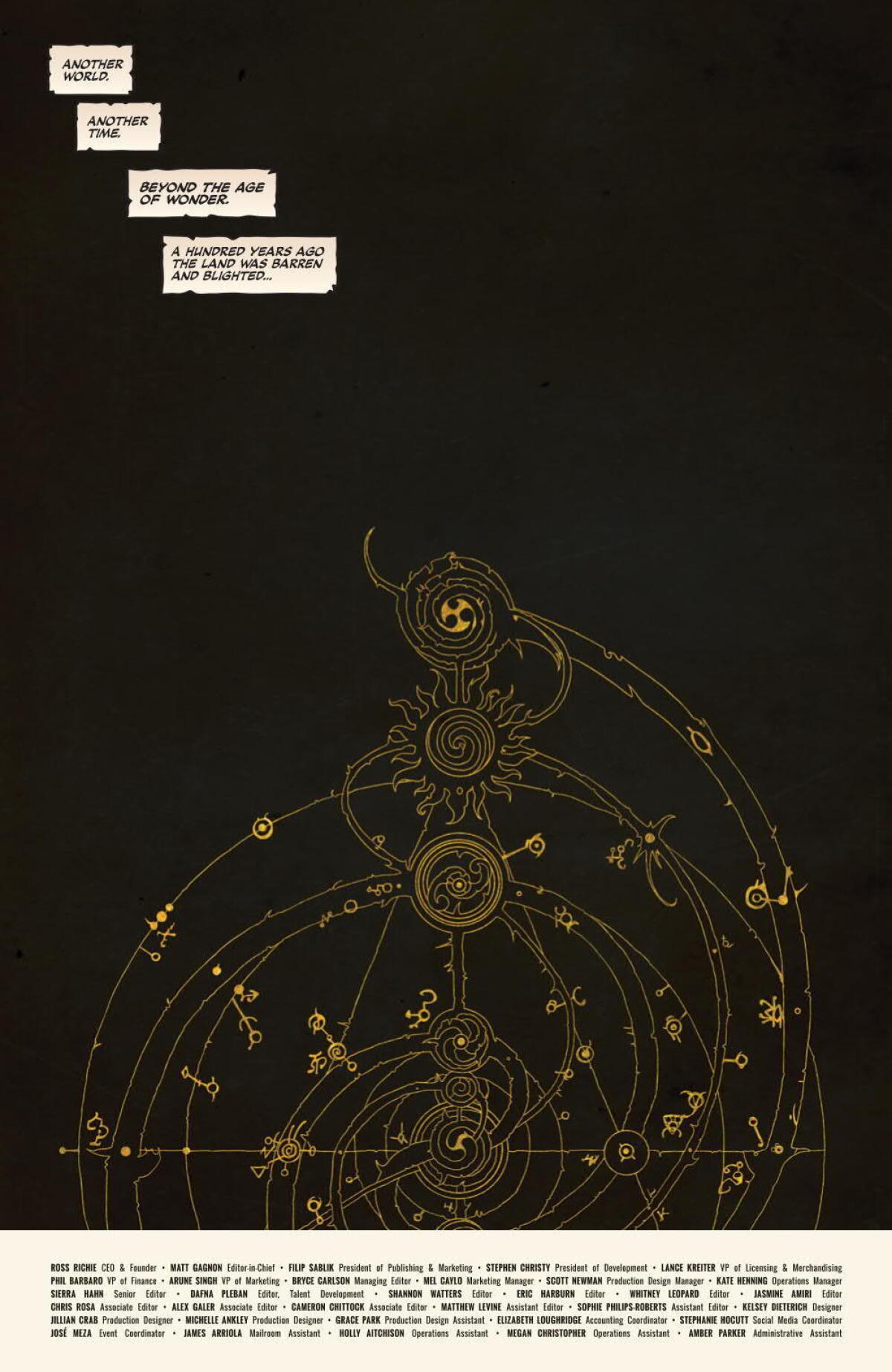

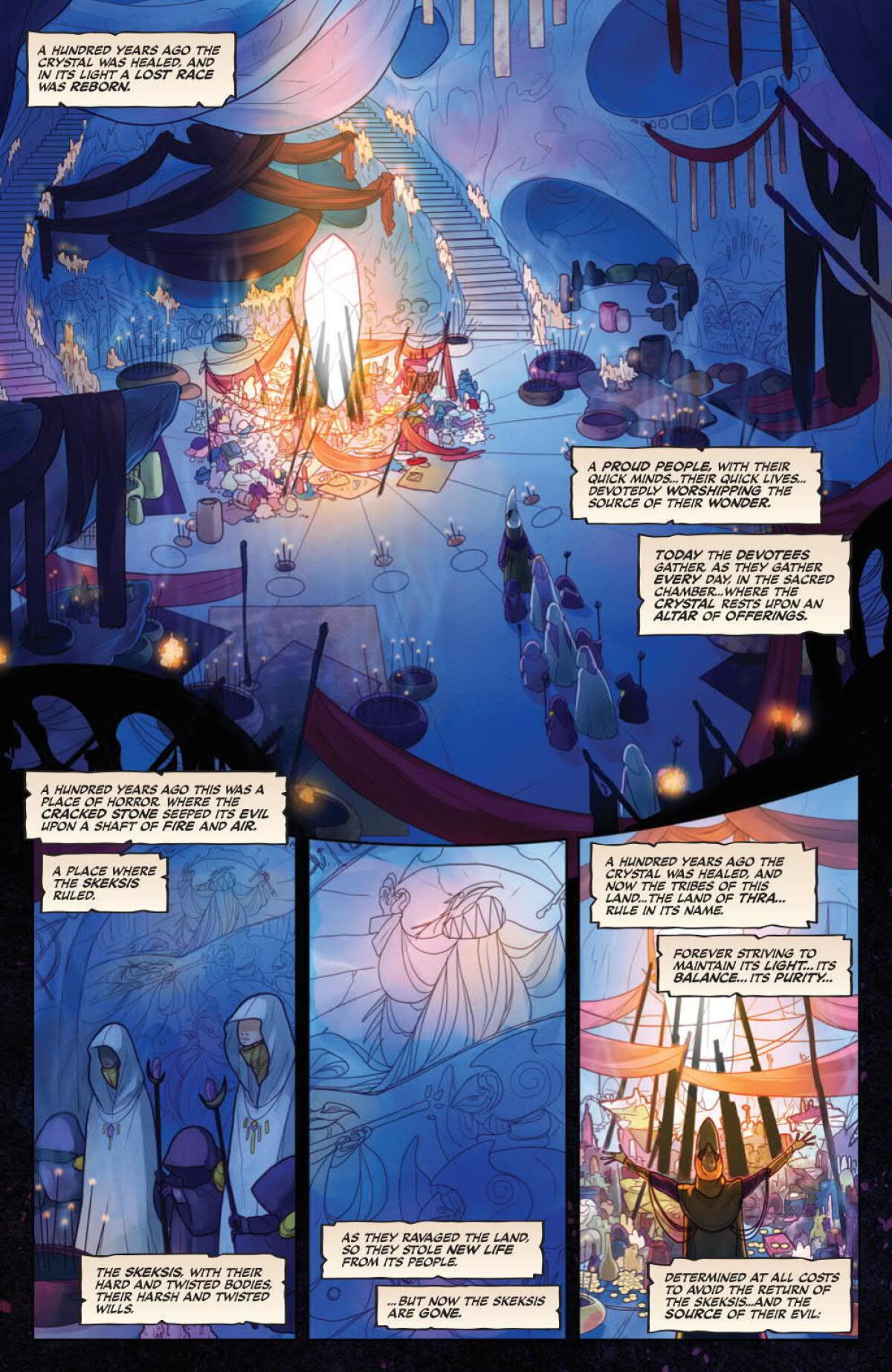

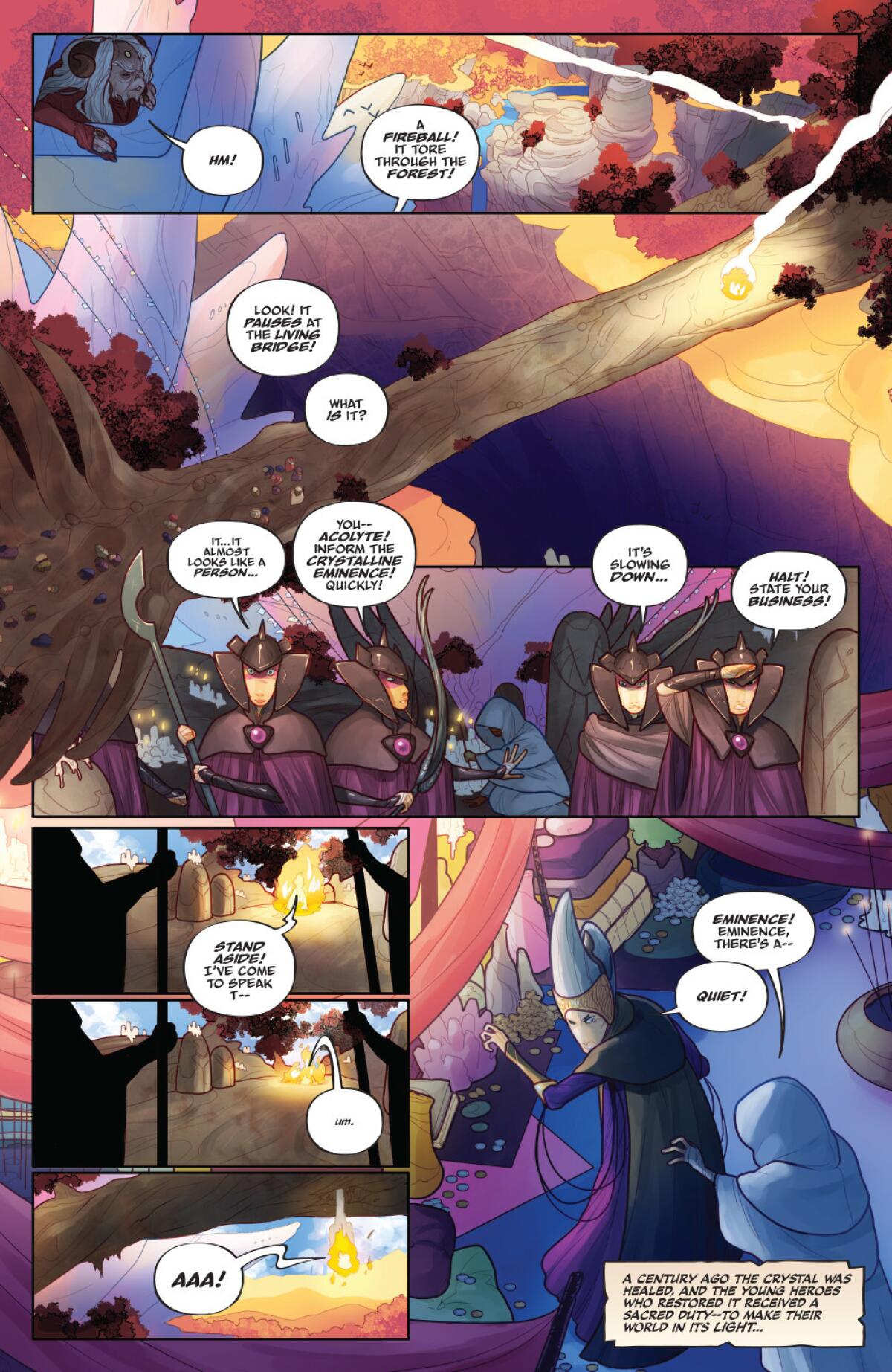
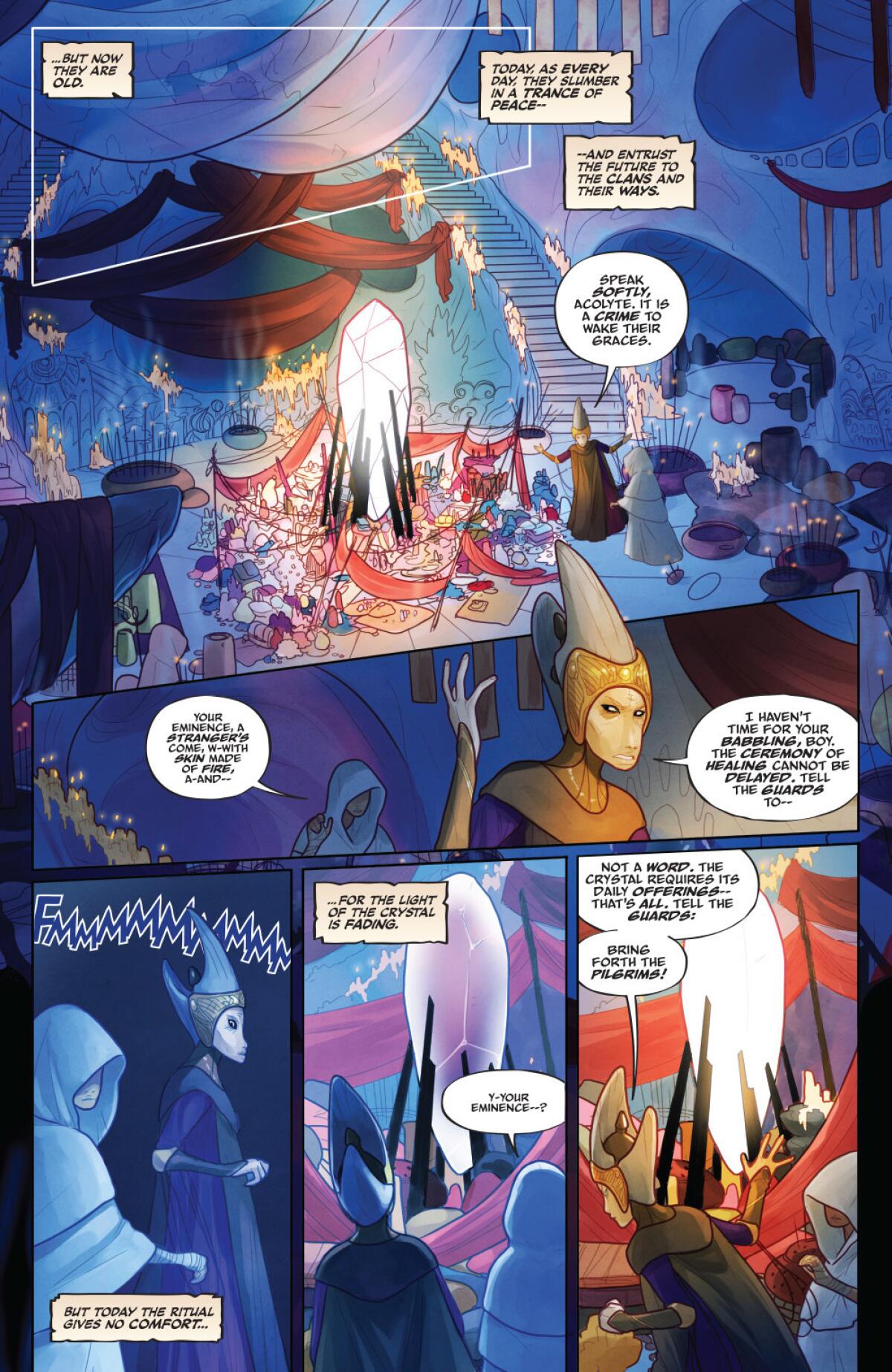

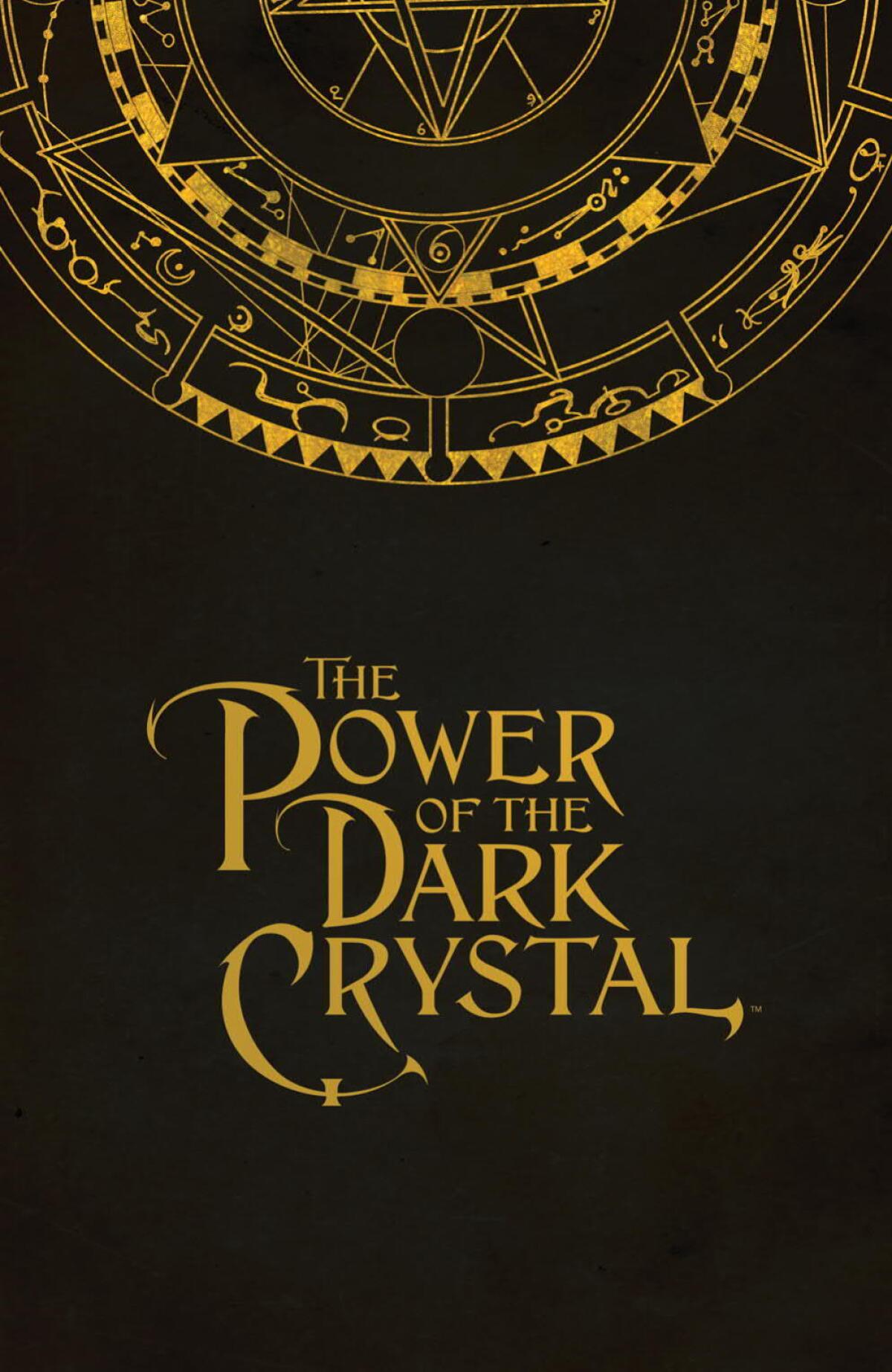
Twitter: @tracycbrown
The biggest entertainment stories
Get our big stories about Hollywood, film, television, music, arts, culture and more right in your inbox as soon as they publish.
You may occasionally receive promotional content from the Los Angeles Times.








